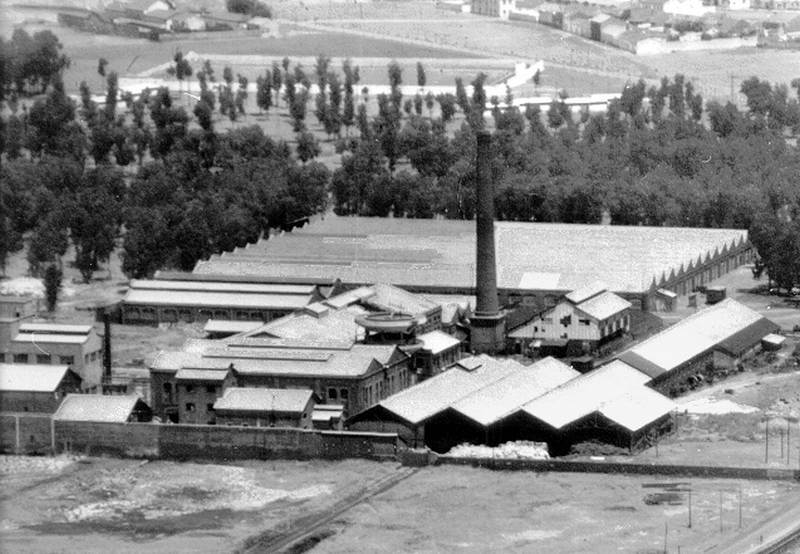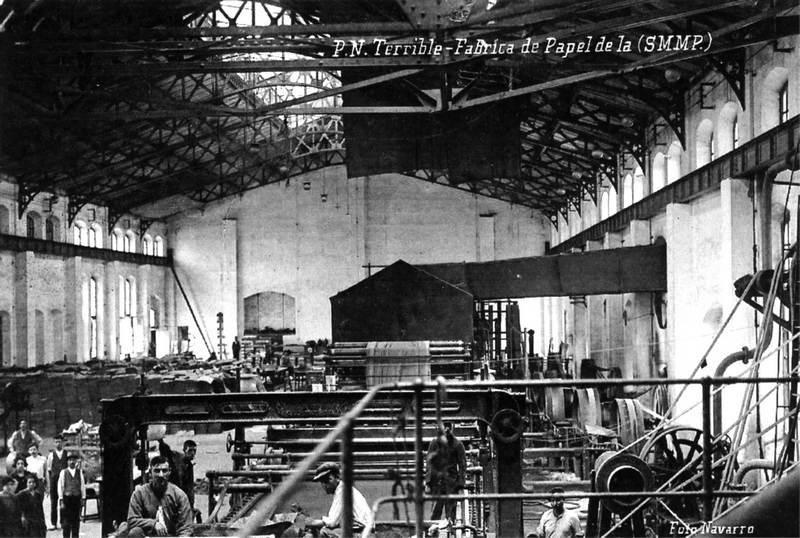In 1908, the SMMP acquired a large estate of 14,000 Ha through the purchase of the Lead Mines of the Horcajo, in Ciudad Real. Although reselling was the most advisable option, its engineers decided to use to property to plant tree species which were useful for mining (timber) as well as plants from which to produce paper and fabrics.
Once the source of raw material was guaranteed, the paper mill was built in 1912.
The transportation of materials was carried out by means of a private railway built by the Company between 1905 and 1908 to connect this place and other mining exploitations to Peñarroya-Pueblonuevo.
In the mill, the complex process of papermaking started: extracting the pulp, creating the fibre, pressing and drying. All the necessary chemicals for papermaking were produced in the industrial complex of Peñarroya, except for the glue which was brought from Scandinavia.
The final product was kraft paper or sack paper designed for making sacks and packaging products.
The SMMP's paper mill together with the textilose factory located in front of it, were the only factories in the industrial complex of Peñarroya-Pueblonuevo were women worked.
Incidentally, it should be noted that during the Spanish Civil War and until the fall of Peñarroya-Pueblonuevo, this mill as an exception provided paper for the edition of newspapers in the capital of Spain.
The paper mill was closed in 1968.


